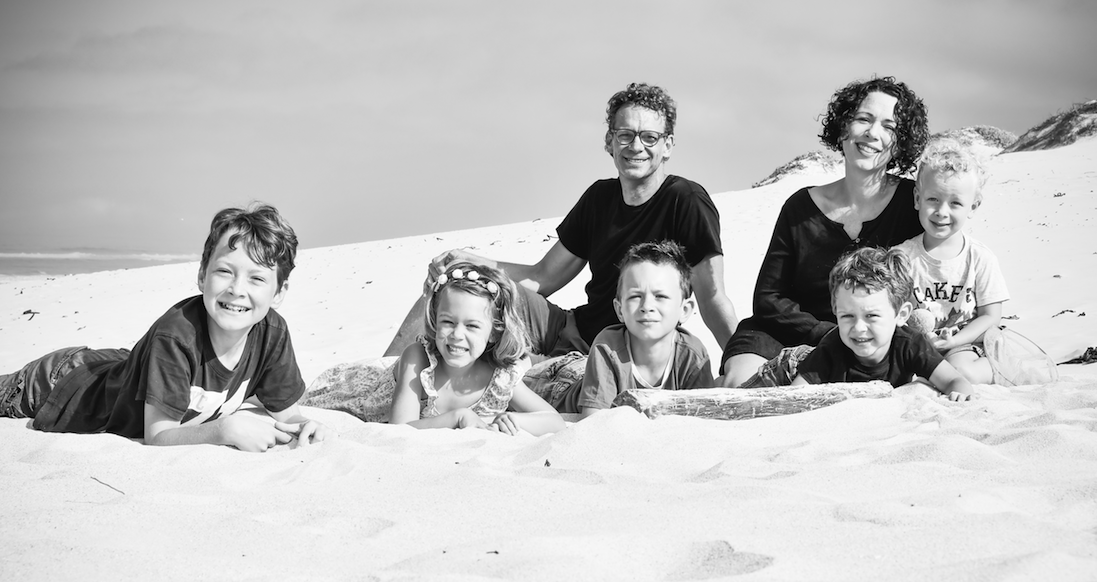
10 Daily Habits To Transform Your Family This Year
One of the most shocking facts us working parents of younger kids have to face is this: for most days of the year, we have just 3 hours with them. That’s an 8th of every 24 hours.
And that’s if you’re lucky. Time-sharing your kids with an ex, or traveling everyday to and from distant work, will cost you more time with your progeny. Some are luckier: perhaps one parent is stay-at-home, or (as with my wife) works only half-days.
For me, those 3 hours every day consist of about 45 minutes first thing in the morning, and about 2 and a half hours after work and before kid’s bed-time.
This slither of time should not surprise us. Ask anyone whose kids are older now and they will tell you not only how fast the years went by, but also how little time you actually have with your kids. The other day a seasoned parent advised me: the days are exhaustingly long, but don’t forget that the years are short, so maximize the days.
Upon reflection, it’s less a case of maximizing the days and much more about maximising those 3 hours each day. I’d go so far as to say that the success of our parenting rises and falls depending on how we spend this trio of hours.
With that in mind, and with the school year about to start, Julie and I have just had our annual planning meeting. One of our main tasks was to tweak our 2017 family weekday schedule relating primarily to those critical make-or-break 3 hours.
WE HAVEN’T ALWAYS HAD A PLAN
For several years we endured the agony of trying an opposite approach: merely taking those hours as they came every day. What a mess that was…
- On weekends and during holidays, we parented okay, but during the week we were unmotivated and ineffective.
- Dreading so-called ‘suicide hour(s!)’, I sometimes deliberately came home a little later from work.
- During those hours, we grabbed any moment we could to anesthetize ourselves with technological distraction – facebook, emails, whatsapp.
- We were together, but connection levels were low; we often sent unhappy kids to sleep.
- Far from working as a team, we ended up fighting with each other, accusing each other of shoddy parenting.
- Utterly defeated, we went to bed almost every night feeling like we missed it (and we had!)
Thankfully, in the last year we discovered a much better way. We are still defeated from time to time, but far less. Here’s the big idea…
INSCRIBE REPEATED HABITS INTO THE FAMILY’S DAILY SCHEDULE
Inspired by the book ‘The Intentional Family: Simple rituals to strengthen family ties‘, over a year ago, Julie and I put our heads together to create a list of daily habits that we try squeeze into these 3 hours, each of which strengthens our family in some way.
Seeing those 3 hours as an opportunity to give ourselves to several life-giving habits means they are now a chance to strategically bond as a family, intelligently shaping our kids and our family culture in the process.
THE POWER OF HABIT
Ever since reading Eat, Move, Sleep, Julie and I have been mindful about forming better daily habits. The book’s strapline gives its central idea away: How small choices lead to big changes. The most important choice we can make is to form habits, because habits, once embraced, begin to automatically perpetuate good choices.
A recent study found that developing good habits is more important to meeting goals than the constant use of self-control. We’re just as likely to default to positive habits, such as eating a healthy breakfast or doing exercise, as we are to self-sabotaging ones. We are all by nature creatures of habit. The problem is that if we are not intentional about forming good habits, we will resort to bad ones. The problem is that, though bad habits are born on the apparent path of least resistance, they end up depleting what little time, energy and happiness you already have, not to mention the strain they put on relationships.
So what are the habits Julie and I are trying to squeeze into the days of 2017?
FIRST-THING-IN-THE-MORNING HABITS
Habit 1: Blast Off with Music and Exercise.
Time needed: 10 minutes.
At a set time, my job is to put some happy, high-energy music on in the lounge. This sends a message to everyone the family day has started. Kids start to gather. Then I announce to the whole house, ‘Two minutes to Jumping Jacks! Who’s joining me?’ Then, following our very own instructor on Johnson and Johnson’s 7-minute workout app, Julie and I, and whoever else has joined in, does a 7-minute variety of 30-second long exercises.
Why we do this. It’s fun and feels great. It also has remarkable health benefits. It models to our kids the value of lifelong exercise. It’s a bonding moment – those of us who complete the 12 sets high-five each other at the end. Also, two-year-old twins make great back weights when doing push ups.
Habit 2: A Healthy Drink and a Thought for the Day.
Time needed: 10 minutes.
While we give our kids 5 minutes to get dressed for school, we prepare either a healthy smoothie or, when our fruit bowl is inadequate for the task, warm water with a touch of lemon and honey. At a certain time, we call the kids to the bar stools at the kitchen counter. Smoothie or honey-lemon water in hand, I share a 30-second encouraging thought for the day. We then toast the day ahead, enjoy our drink and eat breakfast.
Why we do this. The healthy drink has physical benefits. The toasting harnesses togetherness. The encouraging thought, usually a Scripture or some great quote, is a chance for us to drip-feed our family values into our kids.
Habit 3: Family Tasks.
Time needed: 5 minutes.
After breakfast we allocate our kids 5 minutes to do family tasks. You might know them as ‘chores’, but we prefer this name, because they are primarily about kids playing their part in the functioning of the family. Many of a child’s tasks start off first thing in the morning: tidying up their bedrooms and packing school bags for example.
Why we do this. This is a relatively new one for us as a family (so watch this space) but chores are proven to teach kids the importance of good personal habits, team work, responsibility and contribution – all of which greatly increase their chance of success and independence as adults.
FIVE PM-UNTIL-LIGHTS-OUT HABITS
Habit 4: A Warm Greeting.
Time needed: 2 minutes.
I have to admit. I am usually broken tired on my way home from work. If I’m particularly weary, the thought of coming home to five kids puts a knot in my stomach. But experienced parent and neuro-educational expert, Gavin Keller, once persuaded me of the importance of getting my head in the game before I walk through that door. Once I walk through that door, it befalls me to say a happy hello to everyone in general, and greet my wife first, followed by each and every child. On my best days, I crouch down, put my hands under their chin or on their shoulder, and say, ‘I love you. I missed you today. How are you?’
Why we do this. It sets the tone for the next few hours. If a child wondered at all whether we thought of them while apart, we answer that question immediately.
Habit 5: No Screens.
Time needed: 0 minutes.
This is the hardest habit of all. No emails, Whatsapps, Facebook, Youtube Videos or TV until our kids are asleep. Julie and I permit ourselves to deal with any loose ends on screens – emails and messages unanswered – once the kids are down.
Why we do this. For parents nowadays, screens are Weapons of Mass Distraction. We simply must focus on our kids in these rare hours. One government did a poll and discovered that 33% of kids complained that their parents were always on their smartphones. Yesterday I watched a video of a mom on her cellphone while her kid drowned in front of her. It made me wonder: how much are we missing out on while we’re on these blasted addictive devices?
Habit 6: Five Alive.
Time needed: 20-60 minutes.
We shout ‘Five Alive’ and then do something fun and physical as a family. It could be swimming, soccer, ball-throwing, running races, or home-made obstacle courses in our back yard. Twice a week, we jump in the car and hit a nearby park, lake or greenbelt, where we have all kinds of make-shift activities: like using the park’s jungle gym for obstacle races, or playing in the shallow river at the greenbelt, or throwing stones into a lake (like Charlie is doing in the picture above.)
Why we do this. Sedentariness in kids is at an all-time high, only getting higher as they get older. I hardly ever feel like Five Alive, but somehow the energy spent results in multiplied energy. It helps us parents to get out of work mode and into family mode. We always feel happier after Five Alive.
Habit 7: Family Tasks Check-In
Time needed: 5 minutes.
We check up on tasks that were meant to be done during the day: homework, tidying up, uniforms packed away, lunch boxes unpacked. Additional tasks are assigned to individuals such as setting the table, or (not yet in our home) cleaning the pool or yard, helping with food prep etc. There are no rewards given. These things are expected of every member (older than 3).
Why we do this. Research shows that parents who give chores can expect on average one argument per week with each child (relating to doing chores), but the long-term results, mentioned in Habit Three, make that a minimal cost.
Habit 8: A Dinner Conversation.
Time needed: 15-40 minutes.
This is a dying habit in the Western world. In our home, we’re trying to get everyone to sit down at the table. No one is allowed to leave. That’s the theory anyway! We say or sing grace. At some point in the meal, if conversation isn’t already flowing, Julie or I initiate one. There are two rules: One person speaks at a time. The others listen. I have to admit how seldom we get this right with 5 kids under the age of 8. The percentage of time any topic we bring up devolves into someone mooning the table, talking about poo, or trying to claim another person has stolen their airtime, is uncomfortably high. BUT the times we have gotten it right, and everyone remains fully-clothed and in control of their emotions, makes us committed to increasing our hit rate. I suppose it’s only fair to set the bar low when they’re small.
Why we do this. Bringing food, fun and conversation together day after day is proven to be associated with lower rates of substance abuse, teen pregnancy and depression, as well as higher grades and self-esteem. Real conversation is a more potent vocabulary-booster than reading, and the stories told around the kitchen table help our children build resilience.
Habit 9: Snuggle Time.
Time needed: 10-30 minutes.
In our home, straight out of the bath, kids brush their teeth and then go to their rooms. Julie usually takes the two-year old twins. I take the older boys, and Ivy decides which group to join. Then, climbing onto a bed with them, we read or tell them stories, hear anything they may want to tell us, snuggle and sometimes tickle them. We also often pray with or for them.
Why we do this. It gets them ready for sleep, it deepens the parent-child bond, and story-telling boosts their brain development. Also reading Bible stories and praying for them gives us a calm, quiet moment in the day to authentically express and model our faith.
Habit 10: Just the Two of Us.
Time needed: About an hour.
Technically this is not part of the 3 hours, but time with one’s spouse is the most crucial family time there is. Assuming we have successfully escaped our kids’ rooms after lights out, we meet at the couch, get 10 minutes of screen time to deal with loose ends, and then – usually at 8pm – we discuss how to best use the next hour and a bit. Sometimes we agree to do our own thing, but very often we do something together. At about 9h30, we hold each other accountable to start moving towards bed. After all, we’re usually exhausted and tomorrow is another big day.
Why we do this. Every family is only as strong as our marriage, and marriages need daily bonding time to thrive. As for an earlier bedtime, we have found that when (and we don’t often enough) get a good night of sleep, our parenting (and every area of life) is about 50% better the next day.
HOW TO RESCRIPT YOUR FAMILY’S DAY
I hope you’re inspired. The way to rescript your family culture is to reorganize those 3 hours of your family’s togetherness. Here’s how…
Step 1: Discern your family daily habits.
If there’s anything helpful in our list, feel free to use it. But you have the privilege of creating your own list. It must be unique because you might have more or less hours and kids than we do. Also different ages of children call for a different set of habits.
If you’re a single parent, consider yourself free to create your own daily rhythms, but if you’re married, you need to grab some time with your spouse to first agree on the concept, and then together discern the habits you hope to inscribe into your family’s weekday. My advice is keep it simple and sustainable. Less is more.
Step 2: Create a daily schedule.
Work these habits into a realistic time-schedule, which includes all the other things that need to happen. Print it out and put it up where all can read it. About twice a year meet to tweak this schedule.
Step 3: Commit to your schedule.
Read it often. As spouses, hold each other accountable to the plan, gently call a ‘foul’ when one of you gets into the habit of being distracted. Don’t put up a fight when the other person calls you on it.
Don’t give up. Habits take time to form. Nothing undergirds them like reminding yourself why you have chosen them. Everyday Julie and I shoot for 10 out of 10, although we seldom hit it. We have found that the more we practice, the easier it gets to score higher – and the more deeply connected and happier our family becomes.
If you haven’t already, maybe you want to like my Facebook page, so you won’t miss out on 6 related future posts, in which I go into far more detail on Family Tasks, Dinner Conversations, Snuggle Time and Five Alive. Also I will take a look at some key Weekly Habits.
Comments
Also published on Medium.




